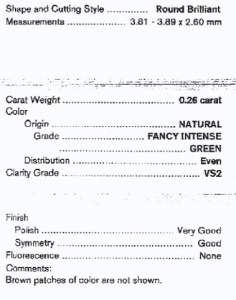- Joined
- Apr 30, 2005
- Messages
- 33,275
I just paid over $16,000 for a 0.12 ct. GIA Fancy Deep Blue (no modifier).
Why?
Becuase it's real. (and it's purdy)
It came out of the earth with this color.
That means something.
That means a lot, well, to me anyway.
For that price I could have bought a larger synthetic blue diamond.
Why didn't I?
Well, because it is not natural.
If I'm going to buy something man made, why not just buy glass?
Glass is much cheaper than a synthetic blue diamond.
Both are fake.
Imagine proposing with a "diamond" and she finds out you cheaped out and bought a fake!
What does that say about you and how you feel about her?
I'd rather it be small than be fake.
I do not think the marketing people of synthetics can persuade people like me.
Sorry.


Why?
Becuase it's real. (and it's purdy)
It came out of the earth with this color.
That means something.
That means a lot, well, to me anyway.
For that price I could have bought a larger synthetic blue diamond.
Why didn't I?
Well, because it is not natural.
If I'm going to buy something man made, why not just buy glass?
Glass is much cheaper than a synthetic blue diamond.
Both are fake.
Imagine proposing with a "diamond" and she finds out you cheaped out and bought a fake!
What does that say about you and how you feel about her?
I'd rather it be small than be fake.
I do not think the marketing people of synthetics can persuade people like me.
Sorry.









300x240.png)